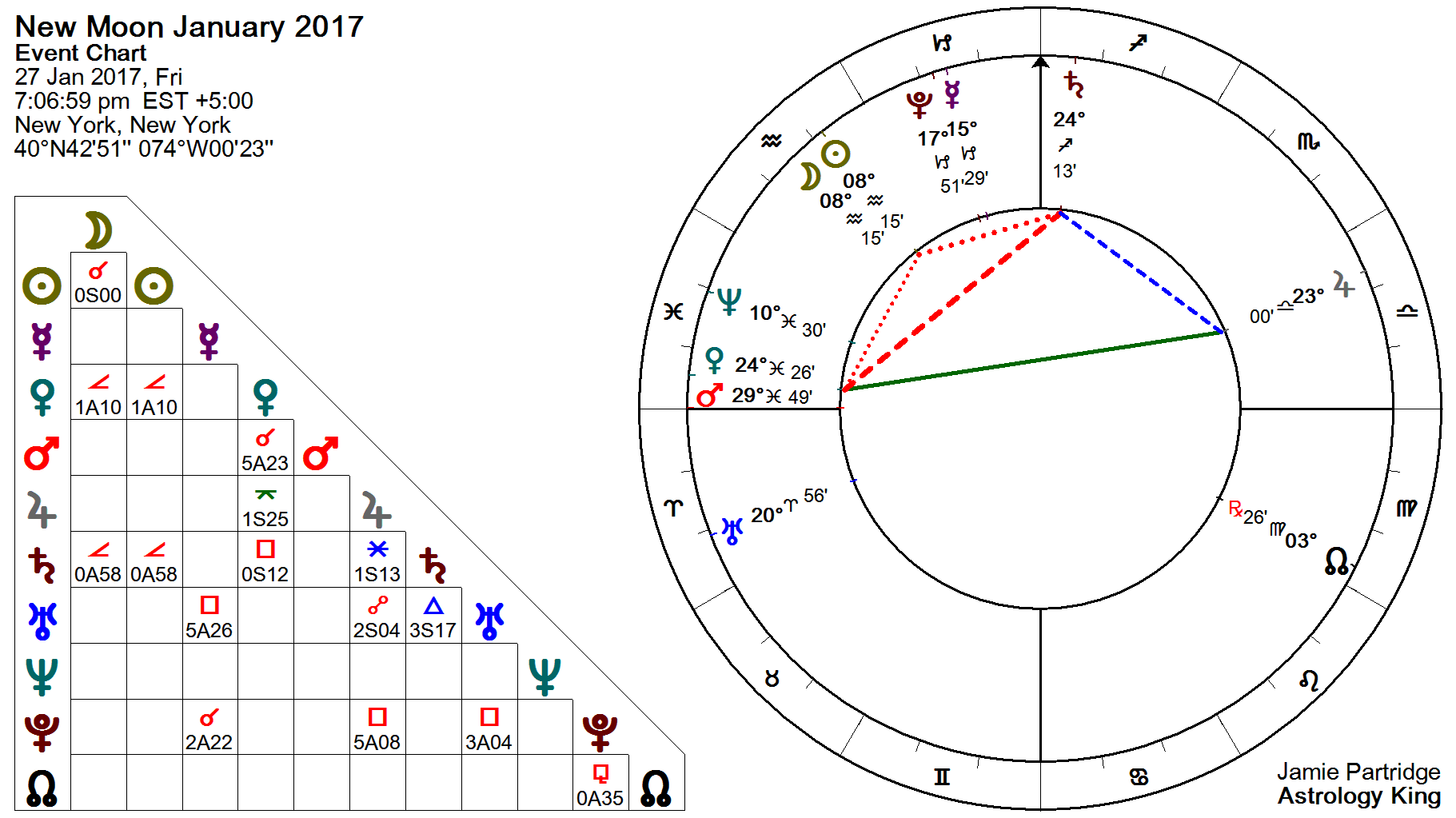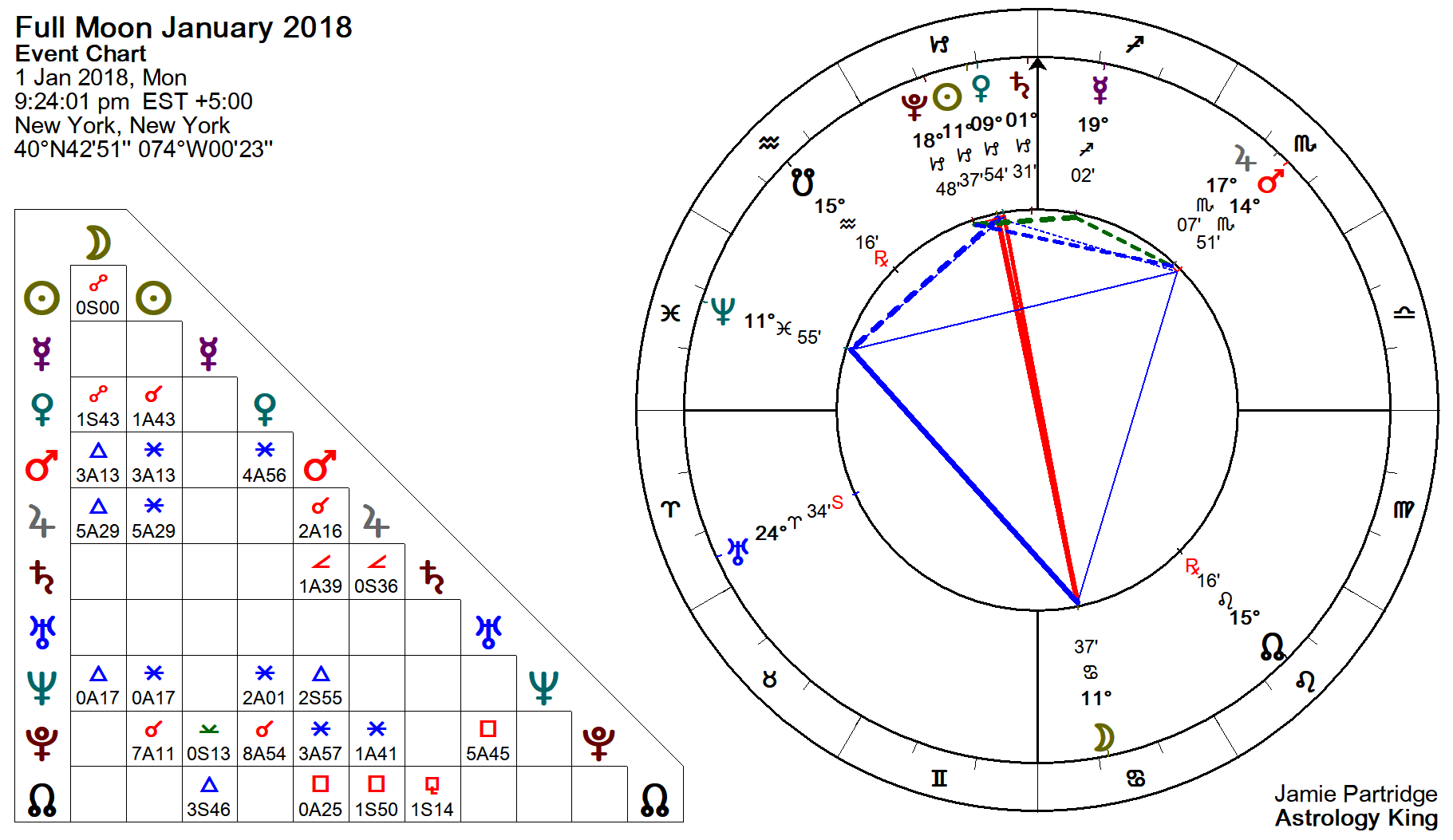- New Moon in Capricorn 15°24’, January 6, New Moon in January | jakubzidek.cz
- Moon Tracks Astrology Calendars
- Moon Phases in 2019: Full Moon Calendar
- Mercury enters Capricorn
Sometimes, this will just cause a filmy glow around the Moon; at other times, you might see a rainbow prism on the clouds or an actual lunar halo circle of light around the Moon. In rare cases, you might see two faded small white moons to either side of the Moon, as part of a lunar halo: Skip to main content.
The Full Wolf Moon. By The Old Farmer's Almanac. The Old Farmer's Almanac. What do you want to read next?
New Moon in Capricorn 15°24’, January 6, New Moon in January | jakubzidek.cz
Full Moon for November Night Sky for January Full Moon for June Full Moon for August Full Moon for February Full Moon for September Full Moon for April Full Moon for July Observing the Total Eclipse: Full Moon for December November Night Sky Guide. Never knew where the phrase " once in a blue moon" came from. Always interesting and informative.
I love this it gives such great information. Why is it also called the "Old" Moon? What is the date of the full wolf moon in January ? This is so cool because I have to write a whole paragraph on the blood moon for school.
I also LOVE the moon and the stars at night. Surrendering to fate, karma, and other powers greater than merely mortal may be seen as the ultimate liberation.
If all is maya illusion , what is the reality that gives rise to the world of appearances? Ambition, responsibility, a place for everyone and everyone in their place….
The interpretations in this box are from the Day Watch software. Cafe Astrology is brimming with free articles, features, interpretations, and tools that will appeal to people with a casual interest in learning Astrology, as well as beginning through advanced students of Astrology.
Moon Tracks Astrology Calendars
The site is run by astrologer Annie Heese. By using this site, you agree to the Terms of Use found here. Solar Eclipse in Capricorn: January 5, , Astrological Chart. Outer Planets in Signs in Jupiter in Sagittarius Faith, optimism, and a yearning to explore all kinds of new horizons: Ambition, responsibility, a place for everyone and everyone in their place… The interpretations in this box are from the Day Watch software.
Share this Article Like this article? It is produced by comet Swift-Tuttle, which was discovered in The Perseids are famous for producing a large number of bright meteors.
The shower runs annually from July 17 to August It peaks this year on the night of August 12 and the morning of August The nearly full moon will block out most of the fainter meteors this year, but the Perseids are so bright and numerous that it could still be a good show.
Meteors will radiate from the constellation Perseus, but can appear anywhere in the sky. August 15 - Full Moon. This full moon was known by early Native American tribes as the Full Sturgeon Moon because the large sturgeon fish of the Great Lakes and other major lakes were more easily caught at this time of year.
August 30 - New Moon. September 9 - Neptune at Opposition. The blue giant planet will be at its closest approach to Earth and its face will be fully illuminated by the Sun.
This is the best time to view and photograph Neptune. Due to its extreme distance from Earth, it will only appear as a tiny blue dot in all but the most powerful telescopes.
September 14 - Full Moon.
This full moon was known by early Native American tribes as the Full Corn Moon because the corn is harvested around this time of year. This moon is also known as the Harvest Moon. The Harvest Moon is the full moon that occurs closest to the September equinox each year.
September 23 - September Equinox. The September equinox occurs at This is also the first day of fall autumnal equinox in the Northern Hemisphere and the first day of spring vernal equinox in the Southern Hemisphere. September 28 - New Moon. October 8 - Draconids Meteor Shower. The Draconids is a minor meteor shower producing only about 10 meteors per hour.
It is produced by dust grains left behind by comet 21P Giacobini-Zinner, which was first discovered in The Draconids is an unusual shower in that the best viewing is in the early evening instead of early morning like most other showers.
Moon Phases in 2019: Full Moon Calendar
The shower runs annually from October and peaks this year on the the night of the 8th. The first quarter moon will set shortly after midnight leaving fairly dark skies for observing.
Best viewing will be in the early evening from a dark location far away from city lights. Meteors will radiate from the constellation Draco, but can appear anywhere in the sky. October 13 - Full Moon.

This full moon was known by early Native American tribes as the Full Hunters Moon because at this time of year the leaves are falling and the game is fat and ready to hunt.
This moon has also been known as the Travel Moon and the Blood Moon. October 20 - Mercury at Greatest Eastern Elongation.
October 21, 22 - Orionids Meteor Shower. The Orionids is an average shower producing up to 20 meteors per hour at its peak.
It is produced by dust grains left behind by comet Halley, which has been known and observed since ancient times. The shower runs annually from October 2 to November 7.
It peaks this year on the night of October 21 and the morning of October The second quarter moon will block some of the fainter meteors this year, but the Orionids tend to be fairly bright so it could still be a good show.
- february 6 horoscope birthday!
- february 16 horoscope for gemini.
- Planet Calendars.
- Rate this Article:.
- Moon Phases ~ Darkstar Astrology.
- Astronomy Calendar of Celestial Events - Sea and Sky.
Meteors will radiate from the constellation Orion, but can appear anywhere in the sky. October 27 - Uranus at Opposition. The blue-green planet will be at its closest approach to Earth and its face will be fully illuminated by the Sun.
This is the best time to view Uranus. Due to its distance, it will only appear as a tiny blue-green dot in all but the most powerful telescopes. October 28 - New Moon. November 5, 6 - Taurids Meteor Shower. The Taurids is a long-running minor meteor shower producing only about meteors per hour. It is unusual in that it consists of two separate streams.
The first is produced by dust grains left behind by Asteroid TG The second stream is produced by debris left behind by Comet 2P Encke. The shower runs annually from September 7 to December It peaks this year on the the night of November 5. The first quarter moon will set shortly after midnight leaving dark skies for viewing.
Best viewing will be just after midnight from a dark location far away from city lights. Meteors will radiate from the constellation Taurus, but can appear anywhere in the sky.
The planet Mercury will move directly between the Earth and the Sun. Viewers with telescopes and approved solar filters will be able to observe the dark disk of the planet Mercury moving across the face of the Sun. This is an extremely rare event that occurs only once every few years.
The next transit of Mercury will not take place until The best place to view this event in its entirety will be the eastern United States, Central America, and South America. Transit Visibility Map and Information. November 12 - Full Moon. This full moon was known by early Native American tribes as the Full Beaver Moon because this was the time of year to set the beaver traps before the swamps and rivers froze.
It has also been known as the Frosty Moon and the Hunter's Moon.
November 17, 18 - Leonids Meteor Shower. The Leonids is an average shower, producing up to 15 meteors per hour at its peak. This shower is unique in that it has a cyclonic peak about every 33 years where hundreds of meteors per hour can be seen.
That last of these occurred in The Leonids is produced by dust grains left behind by comet Tempel-Tuttle, which was discovered in The shower runs annually from November It peaks this year on the night of the 17th and morning of the 18th.
Mercury enters Capricorn
The second quarter moon will block many of the fainter meteors this year, but if you are patient you should be able to catch quite a few of the brightest ones. Meteors will radiate from the constellation Leo, but can appear anywhere in the sky. November 24 - Conjunction of Venus and Jupiter.
A conjunction of Venus and Jupiter will be visible on November The two bright planets will be visible within 1. Look for this impressive sight in the western sky just after sunset.
November 26 - New Moon. November 28 - Mercury at Greatest Western Elongation. December 12 - Full Moon. This full moon was known by early Native American tribes as the Full Cold Moon because this is the time of year when the cold winter air settles in and the nights become long and dark.
